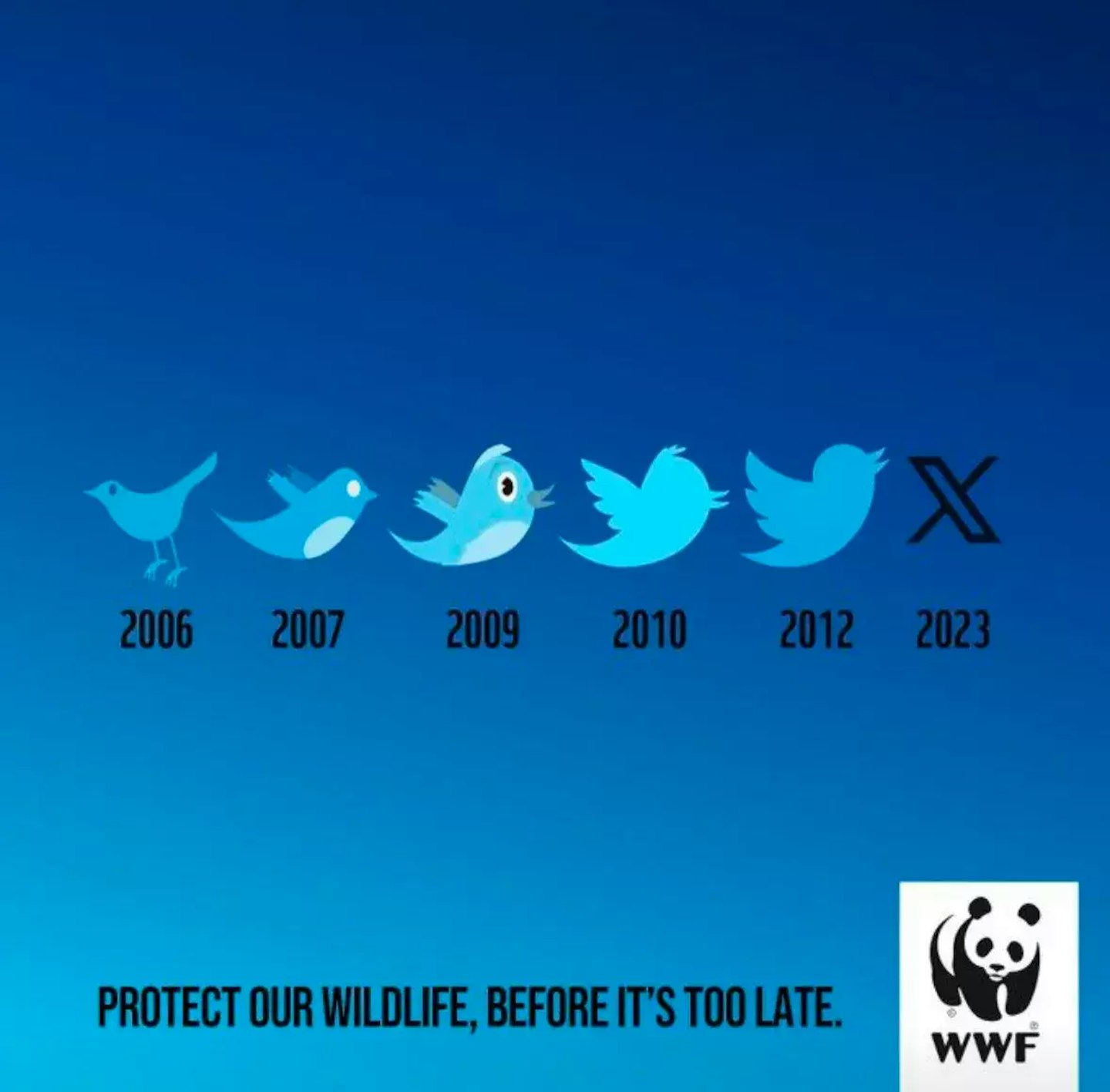
In case you missed the news, Twitter launched a rebrand and a rename recently.
The change, which struck down the famous “bird logo” and replaced it with an "X," has been significantly scrutinized: from die-hard Twitter OG’s to nit-picking designers alike.
This shift aligned with CEO Elon Musk's vision to transform Twitter into a "super app" called X, where he aims to create a platform for “unlimited interactivity in audio, video, messaging, payments, and banking.”
Brilliant? Absurd?
Anyway, that’s the gist.
The waves this change brought forth remain and call into question the impact of such an abrupt brand flip.
As an early adopter of Twitter myself back in 2008, the platform had always felt unique. It was still a standalone format in the social scene that outlasted countless others.
But today it feels… different.
So, what happened? And what lessons can we apply to real estate branding?
I’ve been noodling on a few thoughts this week.
Here’s the rundown.
In April 2022, Elon acquired 9.1% of Twitter for $2.64 billion.
At the time, he was appointed to Twitter's board under a restriction that prevented him from acquiring more than 14.9% of the company.
However, on April 14, he made an unsolicited offer to take Twitter private for $43 billion, expressing concerns about the company's management and alleged censorship leading to a lack of free speech on the platform.
Throughout the funding phase, you might remember Elon unilaterally terminating the acquisition in July 2022, claiming Twitter breached several parts of the agreement, leading to legal action.
However, in October of that same year, he offered to proceed with the deal at the original price of $54.20 per share, and the merger was completed (to the tune of $44 billion).
Following the acquisition, Twitter's workforce underwent a significant change: the company’s 2,300 employees were slashed to only 550 working full-time. By April 2023, the number of active employees all-in dwindled to less than 1,500, resulting in an 80% reduction in the workforce within a year.
Most recently, the company rolled out the X brand after dissolving the Twitter entity earlier this year, too, effectively snuffing out Twitter as we knew it.

Twitter’s brand and user base had long been a flavor of social media all to its own.
Despite grumblings of censorship and Twitter’s in-house misinformation team, the brand managed to provide an experience that its users came to expect.
Was it perfect? No social media is.
Was it familiar? As any long-term Twitter user would likely say, indeed.
It was a place for short-form that felt a little more long-form once threads were introduced, and despite some annoying bot accounts, the platform held up.
I can’t speak to what the next step would have looked like for Twitter, but one must imagine monetization strategies beyond its Twitter Blue subscription. Alas, that was always the platform’s challenge (revenue).
However, my thoughts on this brand upheaval have less to do with what it could have been and what the new direction has meant for its users.
And in my opinion, how its effects have already profoundly damaged the product.
I can’t help but think about real estate branding when investigating off-industry marketing topics like the Twitter rebrand.
It serves as a cautionary tale, one full of parallel paths that we could tie back to parent companies and their property brands.
This topic would be well-suited for a few bright minds getting together to debate, but to keep it lean, I kept bumping up against these main buckets:
If a brand is treated carelessly, you risk destroying years, and even decades, of brand-building efforts. In an instant, Elon introduced numerous questions.
“What is X? Where is Twitter? Is it the same? It looks the same. Where’s the bird?”
In the coming years, it will be interesting to see if we all wonder if changing the name was really a requirement to roll out this new vision.
The same holds for real estate companies, especially properties.
We rarely, if ever, suggest changing names. Not only does it tank existing brand equity (think: social, organic, paid, and everything in between), it typically creates more chaos and questions than good.

One move Elon made that I both loved (seeking professional designers) and hated (for free) was his hunt for ideas on the platform itself. It was neat seeing creative talent flexing, albeit for a questionable cause.
When a brand has decided to rework things, pulling in strategy and creative talent is imperative for success.
In real estate, ripping off a few design starting points in Canva just won’t cut it, and even though that practice has become commonplace in some circles, it’s not professional brand design.
I firmly believe that the best brands in real estate invest in their creative teams and build a vision, voice, and experience that you won’t find on a search results page in Canva.
Perhaps one of the most disturbing pieces to the Twitter story over the last year has been how Elon has treated the Twitter team privately and publically.
The human touch is nonexistent.
We can say what we want about his brilliance and status as a billionaire, but to me, an end user, I'm out if I don’t believe in the brand at the top.
I think a great example of this in real estate is management.
How many times does new management get flipped into place? New name, new contacts, new team, cheaper, and faster.
Is that better? Do renters receive that well? In my experience, that often serves ownership first and the renters a distant third.
If your portfolio has come to appreciate and anticipate a particular level of service, think twice before you pull rank and clean house.
You may end up with a significant renewal issue and many unhappy renters.
Before I close, let me play devil’s advocate for my thoughts.
Can it work? Sometimes!
Does it work all the time? No! But here are a few successes that come top of my mind.
Each of these rolled out with clarity, a purpose, and in some cases, with a phrase that their customers were already calling the business.
Apple Computer - Apple
Dunkin’ Donuts - Dunkin’ (I found many fun writeups on this one)
America Online - AOL
Authentic Form & Function - Authentic (…couldn’t resist 😊)
Should you find your leadership team swimming the waters of a rebrand, take a deep breath and remember that the rip currents are feisty.
Have a strong why, work with professionals, and maintain a profound, focused clarity on your customers. If it feels off, it probably is.
If the change resonates, you may find yourself on a path to greater brand growth. If the change is misguided and/or underdelivers to your audience, watch for the red lights ahead.
What do you think?
What brand successes and failures have you found in your career so far?

Discover why boutique multifamily buildings outperform their larger competitors by focusing on curated experiences, intentional design, and emotionally resonant branding.

Discover how data-driven branding strategies can accelerate leasing, boost NOI, and turn your multifamily property's identity into a measurable performance asset.

Your brand’s reputation is built—or broken—at the leasing desk. Are you ready to unify leasing and marketing to protect it?

Remember when we all DIY dip-dyed our hair in Kool-aide and learned just because you can do it yourself doesn't mean you should? This week we're digging into the hidden costs of DIY'd branding.
A simple read in under 5 minutes, delivered to your inbox Saturday mornings.
A simple read in under 5 minutes, delivered to your inbox Saturday mornings.